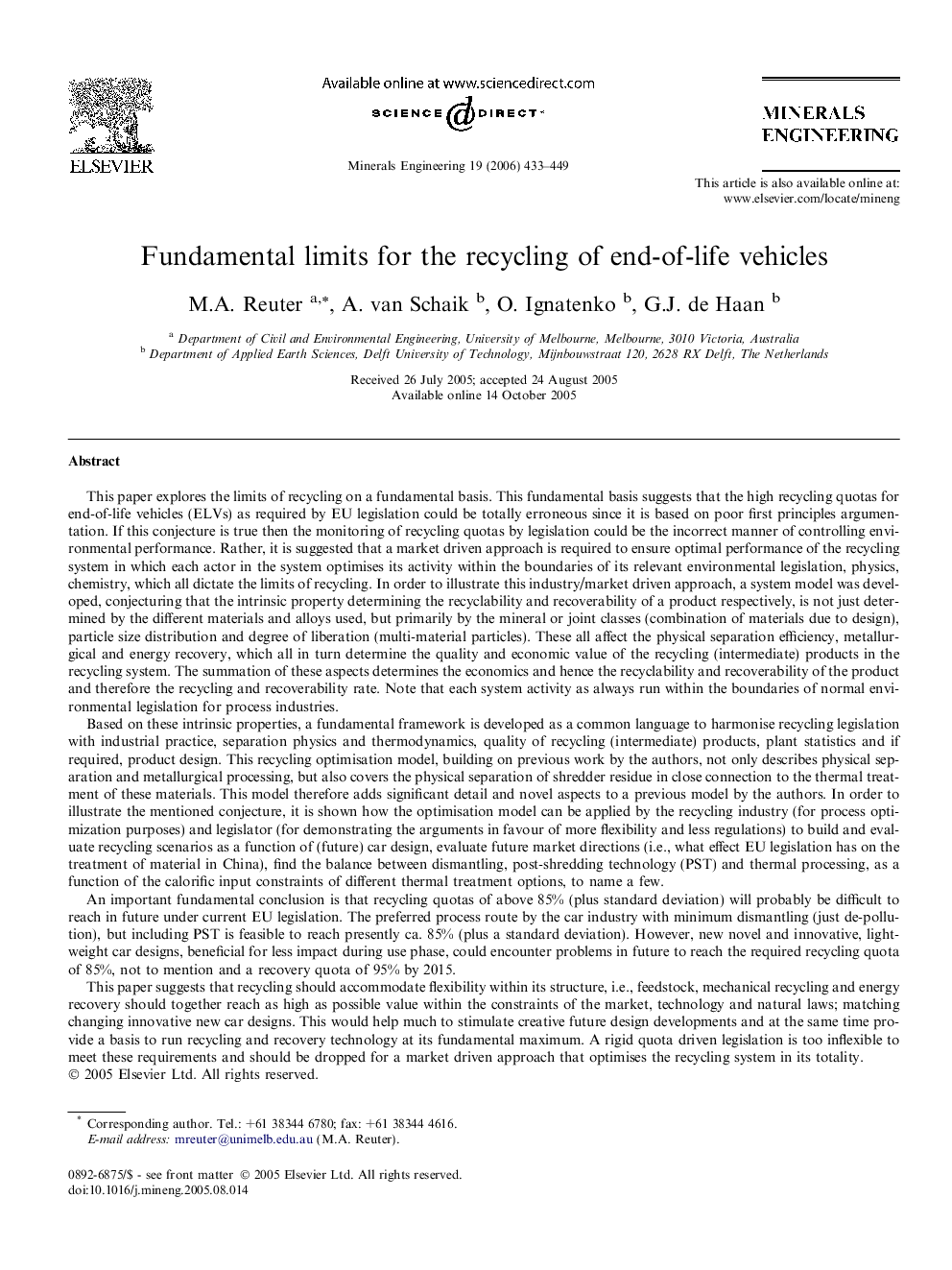| کد مقاله | کد نشریه | سال انتشار | مقاله انگلیسی | نسخه تمام متن |
|---|---|---|---|---|
| 234837 | 465451 | 2006 | 17 صفحه PDF | دانلود رایگان |

This paper explores the limits of recycling on a fundamental basis. This fundamental basis suggests that the high recycling quotas for end-of-life vehicles (ELVs) as required by EU legislation could be totally erroneous since it is based on poor first principles argumentation. If this conjecture is true then the monitoring of recycling quotas by legislation could be the incorrect manner of controlling environmental performance. Rather, it is suggested that a market driven approach is required to ensure optimal performance of the recycling system in which each actor in the system optimises its activity within the boundaries of its relevant environmental legislation, physics, chemistry, which all dictate the limits of recycling. In order to illustrate this industry/market driven approach, a system model was developed, conjecturing that the intrinsic property determining the recyclability and recoverability of a product respectively, is not just determined by the different materials and alloys used, but primarily by the mineral or joint classes (combination of materials due to design), particle size distribution and degree of liberation (multi-material particles). These all affect the physical separation efficiency, metallurgical and energy recovery, which all in turn determine the quality and economic value of the recycling (intermediate) products in the recycling system. The summation of these aspects determines the economics and hence the recyclability and recoverability of the product and therefore the recycling and recoverability rate. Note that each system activity as always run within the boundaries of normal environmental legislation for process industries.Based on these intrinsic properties, a fundamental framework is developed as a common language to harmonise recycling legislation with industrial practice, separation physics and thermodynamics, quality of recycling (intermediate) products, plant statistics and if required, product design. This recycling optimisation model, building on previous work by the authors, not only describes physical separation and metallurgical processing, but also covers the physical separation of shredder residue in close connection to the thermal treatment of these materials. This model therefore adds significant detail and novel aspects to a previous model by the authors. In order to illustrate the mentioned conjecture, it is shown how the optimisation model can be applied by the recycling industry (for process optimization purposes) and legislator (for demonstrating the arguments in favour of more flexibility and less regulations) to build and evaluate recycling scenarios as a function of (future) car design, evaluate future market directions (i.e., what effect EU legislation has on the treatment of material in China), find the balance between dismantling, post-shredding technology (PST) and thermal processing, as a function of the calorific input constraints of different thermal treatment options, to name a few.An important fundamental conclusion is that recycling quotas of above 85% (plus standard deviation) will probably be difficult to reach in future under current EU legislation. The preferred process route by the car industry with minimum dismantling (just de-pollution), but including PST is feasible to reach presently ca. 85% (plus a standard deviation). However, new novel and innovative, light-weight car designs, beneficial for less impact during use phase, could encounter problems in future to reach the required recycling quota of 85%, not to mention and a recovery quota of 95% by 2015.This paper suggests that recycling should accommodate flexibility within its structure, i.e., feedstock, mechanical recycling and energy recovery should together reach as high as possible value within the constraints of the market, technology and natural laws; matching changing innovative new car designs. This would help much to stimulate creative future design developments and at the same time provide a basis to run recycling and recovery technology at its fundamental maximum. A rigid quota driven legislation is too inflexible to meet these requirements and should be dropped for a market driven approach that optimises the recycling system in its totality.
Journal: Minerals Engineering - Volume 19, Issue 5, April 2006, Pages 433–449